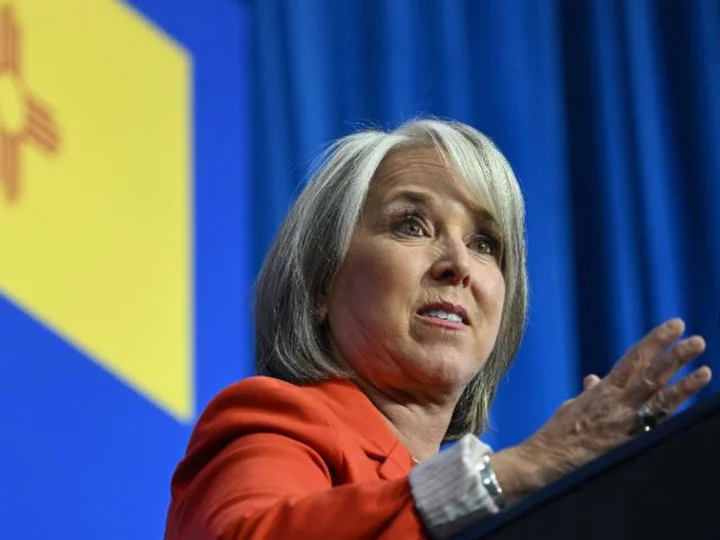New York state's Education Department has updated guidance for its schools to support the rights of transgender and gender-expansive students.
The guidance, issued last week, offers information and tips to help school staff if a student comes out to them -- understanding gender identity and normalizing name, pronoun and restroom usage changes -- and says schools don't need professional or parental permission or proof of gender identity.
Additionally, if a student doesn't want to share their gender identity or transition plan with their parents, school staff must maintain that confidentiality -- the guidance states, nodding to protections in state and federal anti-discrimination laws.
"All students need a safe and supportive school environment to progress academically and developmentally," Board of Regents Chancellor Lester Young Jr, said in a news release. "By adopting the strategies outlined in this framework, schools will be better positioned to foster a more equitable education experience that offers a level playing field that allows every student, including our transgender and gender expansive students, to have a fair chance to succeed."
The guidance comes as some states across America have moved to limit the rights of LGBTQ people. Of the nearly 500 state bills introduced this year targeting the rights of LGBTQ people, 228 involved the rights of students, according to the American Civil Liberties Union. They include bills aimed at preventing trans students from participating "in school sports, forcing teachers to out students and censoring in-school discussions of LGBTQ people and issues," the non-partisan non-profit said.
The New York education agency says its latest guidance updates its 2015 version based in part on newer state laws that require schools to support all students, especially those in the LGBTQ+ community. New Jersey in 2018 published similar guidelines, reinforcing student choice related to gender identity, according to the New Jersey School Boards Association.
New York's new guidance highlights the state's Gender Expression Non-Discrimination Act -- amended in 2019 to explicitly protect gender identity or expression -- and includes data from mental health surveys of LGBTQ+ students illuminating the harassment, assault and bullying they can face in school. The state's guidance was crafted with advice and support from over 30 key stakeholders and organizations, including The Trevor Project -- a nonprofit focused on suicide prevention for LGBTQ youth -- and student input, the department said.
"Transgender and nonbinary students deserve the same opportunities to feel safe, supported, and included at school as their peers," The Trevor Project's advocacy campaign manager, Gabby Doyle, said in a news release.
The guidance highlights a 2019 survey that says most LGBTQ students in New York reported that they had experienced anti-LGBTQ victimization at school.
"56% of students surveyed reported harassment based on their gender expression and more than half of the LGBTQ students surveyed reported having had experienced at least one form of anti-LGBTQ discrimination at school during the prior school year," the survey results showed.
Here's some of what the New York state's new guidance includes:
Support of transitioning at school
If a transgender or gender-expansive student chooses to come out at school, school officials don't need permission, letters from professionals or proof of gender identity from anyone but the student expressing the preference, the document says. "The student is in charge of their own gender transition," the guidance says, "and the school's role is to provide support to make that happen."
"If a student has formally requested to transition at school, the school administrator or another trusted adult, preferably trained in supporting LGBTQ and Gender Expansive students, can meet with the student and determine the steps the student is comfortable taking," the document says.
If a student has not talked at home about their gender identity because of safety concerns or lack of acceptance, they can "begin their transition at school without parent/guardian knowledge," the guidance states.
If a transgender student wants their name and pronouns kept confidential from their parents or legal guardians, school administrators should maintain their privacy, the guidance states. Additionally, "students are not required to obtain parental/guardian consent or a court-ordered name and/or gender change before being addressed by their affirmed name and pronouns."
If a student asks for their educational records "to reflect their stated gender identity, the school should honor that request" -- even if the student hasn't gotten parental permission or a legal name change, the document says.
Handling gender-based activities and restrooms
The guidance also suggests a pivot to gender-neutral language to refer to students as "friends, learners, scholars, pals, folks, humans, people" rather than "boys and girls," "ladies and gentlemen" or a group as "guys." And it suggests breaking students into groups by last names or birth months, rather than by boys and girls, as well as avoiding colors, images or symbols traditionally associated with one gender, such as pink for girls.
It also advises hosting a "family dance" in lieu of a "father-daughter" event and a "royal court" instead of a "prom king and queen."
Meanwhile, all students are entitled under Title IX and the state Human Rights Law to use the restroom aligned with their gender identity, the guidance says. It also suggests incorporating accommodations like single "all gender" restrooms or private changing spaces upon request and says students should never be forced to use one restroom over another or given only one option, the document states.









